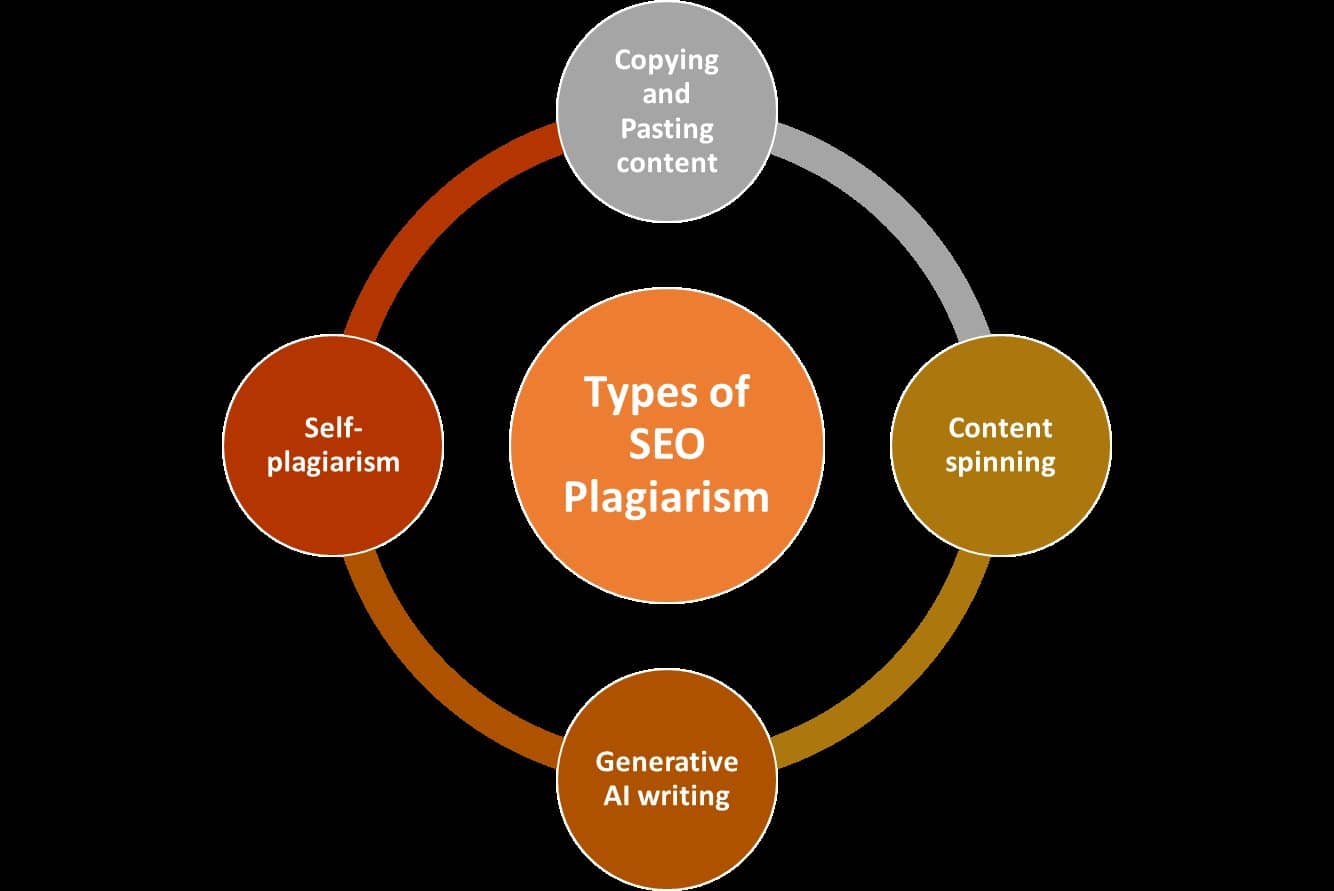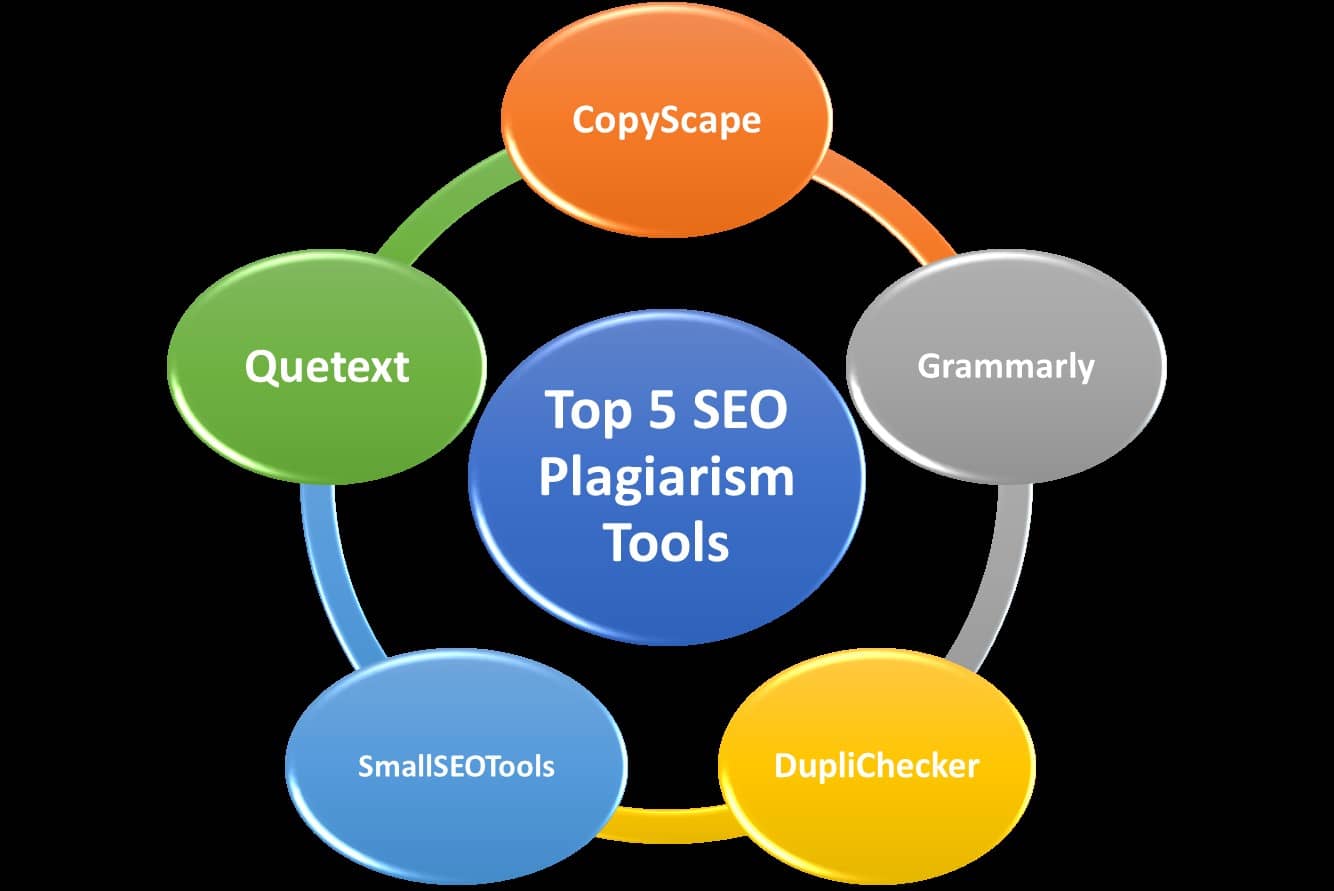Last Updated on September 18, 2024 by Admin
Content is the king in SEO, and original SEO-optimized content is supreme if you want to rank on top of search results. Nevertheless, with the prevalence of SEO plagiarism, the authenticity and prosperity of the website will surely be at risk. A study revealed that a striking 29% of websites feature duplicate materials. SEO plagiarism and other things greatly diminish your brand’s credibility and rankings in the search engine. Here, we will give you a detailed guide to SEO plagiarism, discuss its different forms and tools to detect it, and best practices to ensure this will not hurt your online presencez.
What Is SEO Plagiarism?
SEO plagiarism occurs when someone copies content from other sources without mentioning the original author. It aims to boost SEO. It means copying text, images, or other media materials from other web pages and then displaying such copied material as original content on one’s website. This practice can take different forms, like copying word to word, content rewording, or similarly unacceptable copying based on someone else’s work.
Why is SEO Plagiarism bad for Your Website?
Plagiarizing SEO content can have awful effects on your website layout. Google, for example, is the leader of search engines, putting original and high-quality materials before others. When plagiarized content is discovered, your site might face some serious punishment. Indeed, it might lead to a loss of the search ranks or even complete elimination from the search results. Also, plagiarism will hurt your business image and make your exclusive audience doubtful about you, which may lead to a lawsuit.
Type of SEO Plagiarism
SEO plagiarism, in its various forms and colors, is a treasure trove of various fraud tricks. You must know these various kinds first, and only then can you identify copycat content. Let us now explore the four categories of SEO plagiarism in more detail and why they can harm your website’s integrity and rank.

1. Copying and Pasting content
The simplest way of SEO plagiarism is copying and pasting the content. Some copy-paste techniques are cutting and pasting content from other sources without any original sentence addition. This type of plagiarism could be avoided as plagiarism checkers can easily catch or even a Google search could.
2. Content spinning
Content spinning is an enhanced form of SEO paraphrasing that can be carried out by using one’s own hands or automatic tools to rephrase the available content. The objective is to develop a “new” version of the content by replacing words or phrases with synonyms that do not alter the original meaning. This one minor difference makes plagiarism rather hard to recognize at first glance.
3. Generative AI writing
With the rise of advanced AI tools, a new form of SEO plagiarism has emerged: AI-produced plagiarism. Through these instruments, they employ machine learning algorithms to take source content for analysis and mimic it, generating new pieces that resemble the initial. On the other hand, AI content may be a tool that can be employed ethically in the process, but it can still make accidental plagiarism possible if you don’t review and edit it enough.
4. Self-plagiarism
Self-plagiarism is when you copy part of your material from one page to another or a website that belongs to you. Though it may appear less threatening, in the end, you still rob yourself by self-plagiarizing. Search engines could judge it as an attempt to manipulate the rankings, while users may confront a very poor user experience in case multiple instances of the same content appear.
Top 5 SEO Plagiarism Tools
You need safe instruments to find the SEO plagiarism the best you should try to do. Here are some popular options:

Copyscape (Paid)
Copyscape is a plagiarism-checking tool widely used to search your content and match it with a large database of web pages. It offers duplicate content issues and shows reports of the details.
Grammarly (Paid)
Grammarly, a product known for its grammar-checking abilities, also has a plagiarism checker. It checks your work against billions of web pages and academic databases to see whether it is taken from other sources. Then, it is a matter of formatting.
Duplichecker (Free)
Duplichecker is a free web application that checks your content for plagiarism. Copy your work or save your file, and it will search for similar sentences on the Internet.
SmallSeoTools (Free)
SmallSEOTools offers SEO tools such as the Plagiarism Checker. Its simple interface and unlimited checking of 1000 words make this service free.
Quetext (Paid)
Quetext, an advanced plagiarism detection tool, not only supports different kinds of documents but also works with all major languages. This plagiarism tool has detailed reports and allows you to exclude specific domains from plagiarism checks.
Best Ways to Find SEO Plagiarism
There are two main methods to identify SEO plagiarism:
- 1. Manual Checks: The method employed for plagiarism checking is manual checks. This consists of carefully reviewing your written work and using search engines to locate sentences that are the same or similar phrases on other websites. Though it entails much effort, manual checks can easily help you find plagiarism cases that the automatic tools cannot pick up.
- 2. Analyzing Content Discrepancies: Examining content differences is another way to deal with the similarity issue. Also, investigate the content for stylistic clues, such as sudden changes in the tone of writing or format-related issues. Plagiarized text usually pops out right away in the form of language change or lower quality. Intelligent scrutiny of the content will help you identify suspicious copies and take preventive measures.
Here are some key discrepancies to watch out for:
- Sudden shifts in writing style: If the language suddenly changes through the use of unusual words, phrases, or sentence structure in some parts of the content or has an entirely different tonality, it is a clear sign that it was copied from another source.
- Inconsistent formatting: Plagiarised materials usually follow the original writer’s style of arranging words, which may result in flaws such as deviations in font, size, and spacing within the document.
- Variation in content quality: For instance, if some parts of writing are evidently produced to a considerably higher standard and the rest of the content does not mirror this excellence, it could be a hint of plagiarism from another source.
- Unexplained references or citations: You may encounter some citations and references that don’t clearly explain themselves or fit well with the context of the material. This would be a sign of possible plagiarism.
4 Steps to Prevent SEO Plagiarism
When discussing SEO plagiarism, prevention is always better than cure. Here are four essential steps to safeguard your website:
1. Cite Your Sources
Properly identifying sources is a great starting point for the most powerful technique for curbing plagiarism. While quoting other authors’ ideas and information from other websites and books is the norm, you should always acknowledge the source. Hence, you can prevent copying yourself and convey your adherence to the ethical practices of content creation.
To cite your sources effectively, follow these best practices:
- Insert quotation marks where necessary and list the author and date of publication after the quotation.
- Link to the source document where applicable.
- When you are paraphrasing or summarizing concepts, insert a reference to the initial article as well.
- Prepare a bibliography or reference section at the end of your content to demonstrate the extent of the sources you have used.
2. Leverage Technology (AI) Without Compromising Integrity
AI-based writing tools such as Chat GPT and Grammarly can potentially optimize content generation by providing ideas, improving readability, and detecting grammar and spelling mistakes. However, it is important to understand their power to avoid intentional plagiarism.
When using AI tools for content creation, keep the following in mind:
- Double-check and revise the AI-produced content before publishing to ensure it is in sync with what you represent and how you prefer to write.
- AI tools can be used as a springboard for content, but remember to incorporate your own ideas, real-life examples, and personal perspectives.
- Submit AI-generated writing to the plagiarism detectors to indicate whether it was a case of theft or not.
- Give your writing staff a clear overview of what tools AI can assist with and where they should keep ideas original.
3. Build a Team of Ethical Writers
Not only do the people who have delegated the task of content creation on your website play a key role in keeping your website out of the reach of SEO plagiarism, but the selection of writers, whether in-house or freelance groups, who stick to originality and have a history of ethical content creation should be a critical issue when building a content team.
To ensure you’re working with the right content creators, consider the following:
- Conduct a detailed search history and review the writing samples to determine the quality and originality of their job.
- Use references from previous clients or employers as proof of achievement in ethical content creation.
- Make guidelines on plagiarism standards clear and explain the consequences of offending these standards.
- Provide content producers with training and tools so they can learn and comply with the anti-plagiarism rules.
4. Establish and Enforce Strong Editorial Policies
A strict and well-elaborated set of editorial policies should be the basis for preventing SEO Plagiarism. These policies should enunciate your position on plagiarism, how the sources should be used, and the punishment for violating these prerequisites.
When creating your editorial policies, consider including the following elements:
- A precise description of what could be considered plagiarism and the different types of it (e.g., direct copying, content spinning, and self-plagiarism) should be provided.
- Guidelines are provided for correct citations of sources and acknowledging the authors of the original work.
- A step-by-step process that takes into account cases of plagiarism is necessitated.
- Penalties for breaching the plagiarism policy include dismissal from employment or termination of a freelance contract.
- Resources and tools for online creators to check original text and reference more articles.
Strategies for Website Protection
In addition to the steps mentioned above, there are many other ways you can prevent your site from being penalized for plagiarism.
1. Use of Copyright Notices
It is essential to indicate your website’s copyright to dissuade people who can use your work as their own. Let it be known that any type of usage of the information you present without authorization will have severe consequences.
2. Utilizing DMCA Takedown Notices
If you find plagiarism in content, you can file a Digital Millennium Copyright Act (DMCA) takedown notice. This measure entails the immediate withdrawal of the website involved in the unauthorized use.
3. Regular Content Audits
Make regular content audits to see if any plagiarism appears on your website. Use plagiarism detection tools to scan your document periodically. If any plagiarism is detected, take the appropriate actions.
Conclusion
So, SEO plagiarism isn’t just a matter of your site’s success or failure; It represents your site’s integrity. By comprehending numerous kinds, deploying the appropriate instruments, and applying preventive steps, you can ensure your content cannot be stolen and that your online profile remains strong. Remember, unique content is the epitome of SEO success.
AlgoSaga is a foremost SEO agency, and we are passionate about helping businesses understand SEO in detail and protect their properties against copyright infringement. Regarding the steps explained in this manual and the AlgoSaga partnership, your website will bear these plagiarism challenges and remain vibrant in the digital realm.
